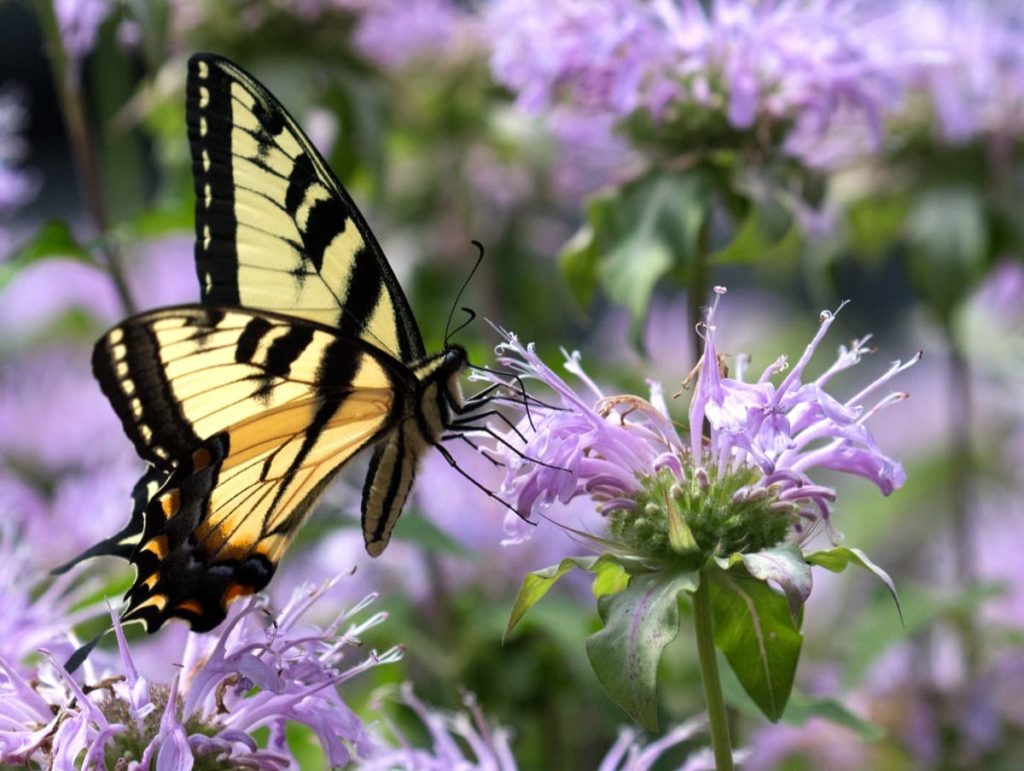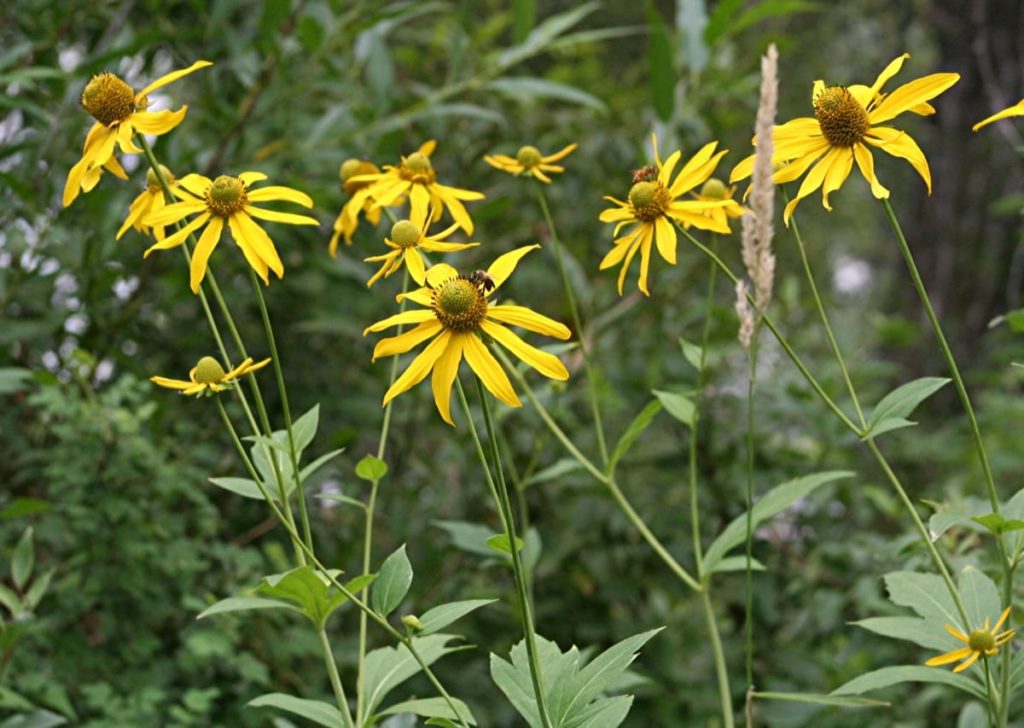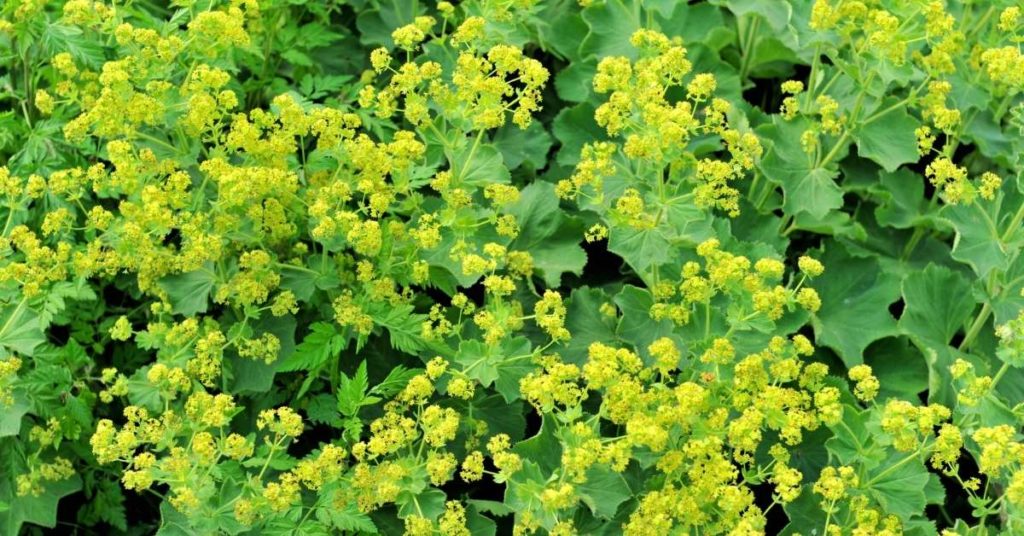Nothing easier for pretty seasonal flowers than planting seeds in the fall. This process is imitating nature itself, but which seeds to fall sow? Join me as I discuss the 14 best seeds for successful fall sowing.
14 Best Seeds for Fall Sowing (Planting Seeds in Fall)
Choosing which seeds to fall sow will depend on your gardening zone. Most of the choices for fall sowing on this list would work for the Midwest, Northeast, and most of the northern country, really.
Once you know where you will sow the seeds, make sure you clear the area of weeds or grass but please DO NOT USE HERBICIDES! I like to break up the soil a little, so the seeds have an easy time getting in there, so to speak.
Whether you want them to spread in the area they’re in or a whole new area, gently scatter the seeds there. You may lightly scatter them and let nature take its course or very lightly cover them with soil. I always think of how they grow in nature, without my help, and try to emulate that.
It may be beneficial to see if any of your seeds need the dark. If so, lightly cover.
I’ll list the zones and time to sow under each flower, but still, make sure you check your exact location!
Ok, let’s dig in!
This post contains affiliate links. For more information, see our disclosures here.
1. Black-eyed Susan

The beautiful Black-eyed Susan (Rudbeckia hirta) is a late-spring-to-fall stunner. Deadhead the flowers, and it will literally bloom all season long.
You’ll be able to harvest the seeds when you see the middle of the flower (the pistil) turn brown or black. It will also be dry and almost feel prickly to the touch.
Your seeds will find their way into the soil on their own with the help of rain, snow, insects, and plain instinct.
I generally sow seeds after our first hard frost and before the ground freezes. The reason for this is so that they don’t start to grow. If they started growing in early fall, they wouldn’t have a chance to get strong enough to make it through our winters!
These pretty yellow flowers may not bloom until the second year, so know this is normal for the plant.
Black-eyed Susan is a perennial in USDA hardy zones 3-7. They are tough, easy-going, beautiful, and beneficial flowers!
2. Coneflower

I find it interesting that the only true native coneflower (Echinacea) for my Midwest area is the Pale Purple Coneflower.
All coneflowers can be fall sown, though, and all have the same care. As with all plants and flowers, native is always tougher and can withstand more than non-native plants!
The coneflower is also very easy to collect seeds from. Like Rudbeckia, coneflowers will get a dry, tough, and somewhat “prickly” center where the seeds form.
It’s important to wait until any flower is ready before harvest, or the seeds may not be viable. For coneflowers, don’t gather seeds until the flower looks dead—no color left on it, just brown.
Then harvest the seeds you want and sow them where you want to see them next year! The timing for fall sowing is the same; generally, after a hard freeze so they don’t sprout.
These hardy, beneficial flowers will bloom for you from summer to fall, especially with deadheading. Fall sown seedlings will usually bloom the first year!
Coneflowers thrive in zones 5-8.
3. Blanket Flower

Have you ever seen the blanket flower (Gaillardia)? This is one beautiful plant! I love the rings of yellow, orange-red of these flowers, and they are also very beneficial to pollinators! Gaillardia is also an enthusiastic bloomer, so you’ll enjoy them from summer to fall!
Collecting seeds from them is the same as the previous two flowers, although you’ll notice the flowers drop their petals before the seeds form. Fall sowing is also the same, and they need light to germinate, so if you do cover them, do so very lightly.
These gorgeous flowers are fast and easy growers and will bloom in the first year. They are perennials in zones 3-9.
4. Milkweed

The life-giving and very beneficial Milkweed (Asclepias) is the singular host for the Monarch butterfly, and the flowers are a pollinator favorite.
The plant itself hosts many beneficial insects, so find the type of milkweed native to your area and start collecting those seeds!
I have found that fall sowing milkweed gives me the best results for new plants, as growing them indoors is very sporadic. For me anyway!
Fall sowing is also the same, and I generally sprinkle seeds wherever I want them to grow or lightly cover them with soil.
I love milkweed flowers! Common milkweed smells like lilacs. And all flowers are favorites of bees, butterflies, and hummingbirds.
Growing zones of milkweed depend on where you live, so make sure to grab a few varieties of your native milkweed and get to fall sowing! Save the Monarchs! 🙂
5. Bee Balm

If you are familiar with Bee Balm (Monarda), then you know how easily these will spread on their own. This pollinator-loved plant is an easy grower but needs some space.
Plants that are too cramped are susceptible to powdery mildew, and a plant that is stressed from a disease is almost more susceptible to insects or other diseases.
Gathering seeds from Monarda is easy as the flower will look completely dead! Make sure it’s dry and bristly first, and snip off the heads.
You can dry them in a paper bag for a few days first, shaking the bag before fall sowing, or you can gently crumble up the cut flower heads in the area of your choice.
Bee balm usually waits until the second year to flower, so be patient with them as they grow. Flowers will bloom from about July to late summer as long as you deadhead.
They are hardy perennials in zones 4-9.
6. Cutleaf Coneflower

I love the cutleaf coneflower (Rudbeckia laciniata) and their ability to provide for many native bees! Almost every time I look at their flowers, they have bees on them.
They stand really tall, so either plant them in a full-sun area with some shelter (like a building, fence, or railing they can lean against) or possibly plan to stake them.
Their pretty yellow flowers will bloom all summer and again in the fall if they are deadheaded. As with most of these flowers seeds, they will also attract the birds in the fall.
Fall sowing is simple. Either let them spread on their own, or grab some of the seeds when the flower has dried up and brown, and scatter in the area you wish.
These native plants may not bloom the first year, but I had small transplanted plants that actually were full of flowers, so if they are happy, they may surprise you.
Very beneficial to pollinators and basically easy growers, they will provide endless beauty for you!
Growing zones for the cutleaf coneflower are 3-9.
7. Lavender

Lavender (Lavandula) not only has so many uses for us, but pollinators do love the flowers. Even just walking by my patch of lavender brings a smile to my face as I inhale the beautiful scent.
Fall sowing will slowly and automatically happen if you allow this plant to spread, or you can sow the seeds yourself in the area you desire. I have had my first lavender plant for years, and it has spread quite slowly, so no worries about it taking over.
Lavender seeds need light to germinate, so barely cover the seeds after your first frost. To collect them, wait for the flower head to get brown and dry, and gently shake the seed pods over a bowl, bucket, or paper towel.
Or, cut the flower heads and release the seeds the same way. Some people will cut the flower heads and throw them in the area they want the lavender to come up the next year.
This is a tough, easy-growing plant that will supply its benefits for many years. Depending on your variety, they can bloom from spring to fall. Mine blooms in the spring and reblooms in late summer, all without deadheading. I’m sure I’d get more flowers if I did!
Most lavender is a perennial in zones 5-9, and most bloom the first year.
8. Lady’s Mantle

I love the shade-appreciating Lady’s Mantle (Alchemilla) with its dainty, airy yellow-green flowers. Fall sowing this plant happens the same way for me as my lavender does, slowly and on its own.I have heard that they can readily spread, but mine has spread very slowly.
If you want to collect the seeds and start them in a new area, though, that’s easy too.
As with the others on this list, please wait till the flower heads dry and either shake the seeds into a bowl or cut them off and sow them after your first frost.
It may take two years for you to see flowers, which bloom from spring to summer, but the pretty ground-covering leaves make up for the wait.
Lady’s Mantle is a perennial in zones 3-8.
9. Coreopsis

Coreopsis, also known as Tickseed, will bloom on and off all season long.
Depending on the variety, they can be tall or shorter, but either way, their beautiful yellow flowers will make you smile. Pollinators, especially bees, it seems, love these flowers as well!
Fall sowing can happen naturally or by collecting the seed heads when they turn dry and brown. This may be my experience, but my Coreopsis has not spread on its own so far. I do use mulch, though, so it’s possible they don’t like to grow through it?
To harvest the seeds off the plant, snip off the entire flowerhead and either pry open the seed pod or just lightly crush it between your fingers. Either way, you’ll see the wonderful new seeds to plant!
Most varieties of Tickseed will bloom in the second year, depending on your area. They are perennials in zones 4-9.
10. Native Wildflowers

I know this covers a wide variety of flowers, including some of them already on this list, but there are just too many good native wildflowers to list! And since most of them have the same needs for fall sowing, and many reputable seed companies offer wildflower mixes, I’m listing them as one. 🙂
Native wildflowers are not only beautiful but essential to pollinators! Fall sowing is easy if you broadcast the seeds into a large area, especially if you buy a specialty bag from a reputable company like American Meadows, Prairie Moon Nursery, or Eden brothers.
The biggest thing is to make sure the wildflowers are native to your area before sowing in the fall and that your area is good for them. In other words, you wouldn’t put sun-loving flowers in a shady area.
You really can’t go wrong with natives; they support nature the best and are usually the hardiest, toughest plants you can have!
11. Columbine

Columbine (Aquilegia) is a pretty little plant that has many different varieties. Regardless of the color, most of us know them for their delicate little spikes on the flowers.
Not loving too much sun or dryness, think of that when you are fall sowing these seeds. They also don’t seem to be rapid spreaders, at least here, for mine hasn’t spread at all since I planted them.
To collect seeds, wait until the flower is done blooming and locate the green seed pod. Once it begins to brown, you can snip it off carefully and collect the seeds.
Columbine will bloom from mid-spring to summer and is a perennial in zones 3-8.
12. Shasta Daisy

The Shasta Daisy (Leucanthemum) is such a happy, cheerful flower! Pollinators do like it, and it has a long bloom time of early spring to late fall!
It’s important not to confuse this beautiful flower with the Oxeye daisy, which is considered invasive in some areas. I have a bunch of it growing in parts of my horse pasture, and although I leave it (it IS pretty, and pollinators still use it!), I don’t encourage it in any of my flower beds.
Since this daisy could be considered a perennial wildflower, fall sowing is the same as many on this list. Either let it spread on its own if you already have some (and want it to spread) or wait for the seeds to mature and sow them in your designated area.
Collecting is easy; wait until the flower looks dead and dried!
Shasta daisies thrive in zones 4-9 and will bloom the first year.
13. Penstemon

Penstemon, also sometimes referred to as Beardtongues, are a hummingbird favorite! These pretty little flowers will bloom beautifully in the summer and fill that gap between spring bulbs and later-summer blooms.
Penstemon will develop little capsules of seeds on their stalks where flowers once were. These capsules will automatically break open about 6-8 weeks after flowering, with the bottom seeds bursting first, so make sure you watch for them if you plan on fall sowing in a different area.
Either take off the seed capsules by hand or just cut the flower stalk to harvest your seeds—Flowers bloom in the first year, which is always a nice bonus.
Penstemon is a perennial in zones 4-9 and comes in a few different colors.
14. Perennial Sunflowers

We are all familiar with the annual sunflower (which I love!), but perennial sunflowers (Helianthus) are just as beautiful and very beneficial to pollinators.
There are a few different varieties, and this will vary with your location, but they are definitely worth growing! Most of them seem to be more of a clump instead of a singular stalk-like annual sunflower, and many of them can easily be found in beautiful wildflower plots or fields.
Fall sowing is usually pretty easy as you gather these seeds the same way you would the coneflower, black-eyed Susan, and the like. They may spread nicely on their own, too, if you like the area they are in.
Depending on your variety, these could bloom from spring to fall! Most of them benefit from deadheading if you want more blooms, and they are pretty hardy.
Most perennial sunflowers will bloom in the second year and are perennials in zones 3-9.
I want to encourage you to mark your seeds when you’re fall sowing! You can use the traditional markings of stalks or markers or use a small wire fence around them. I do the latter, mostly because I have chickens who may enjoy a meal! Plus, to be honest, I will often forget where I planted what unless I see that wire cage!
It’s pretty exciting to watch little seedlings come up in spring and grow into beautiful flowers that not only benefit pollinators and wildlife but bring beauty to your area.
Do you have any other favorite you fall sow? Please drop a comment below and share them with us! 🙂
Leave a Reply